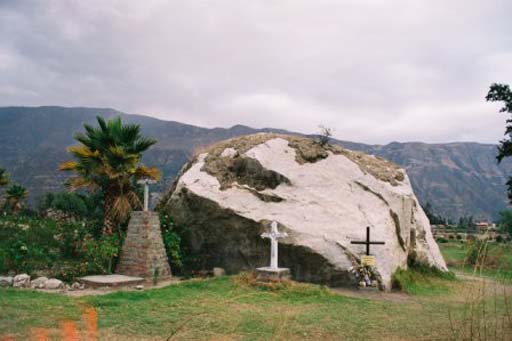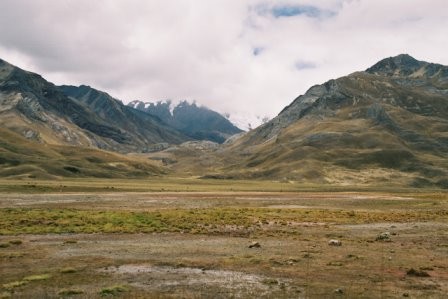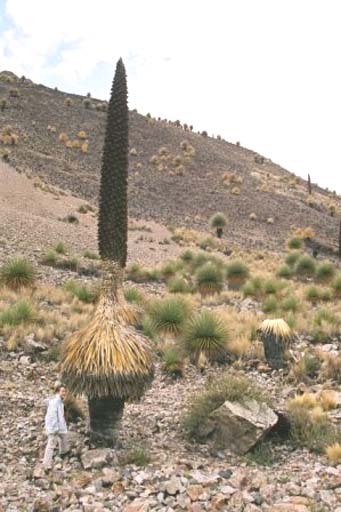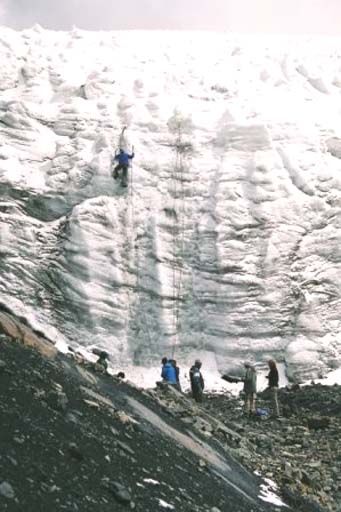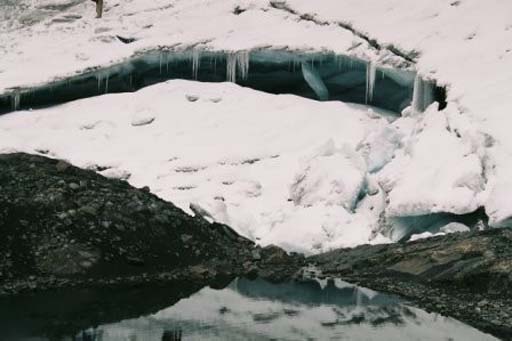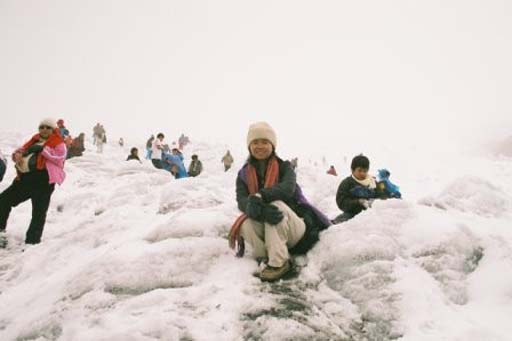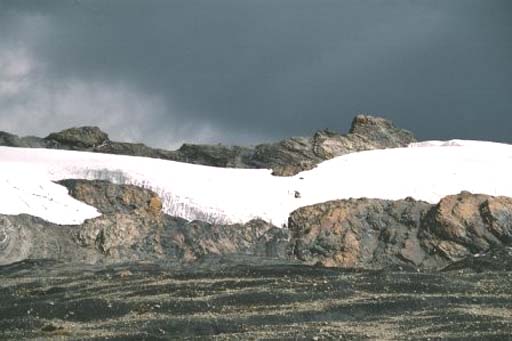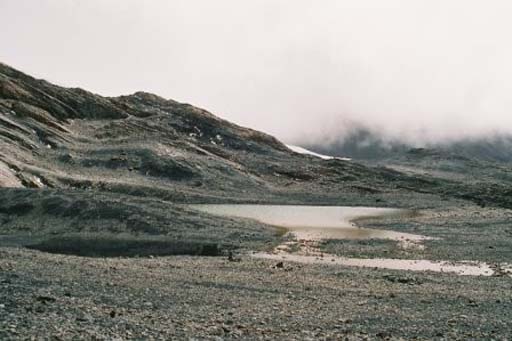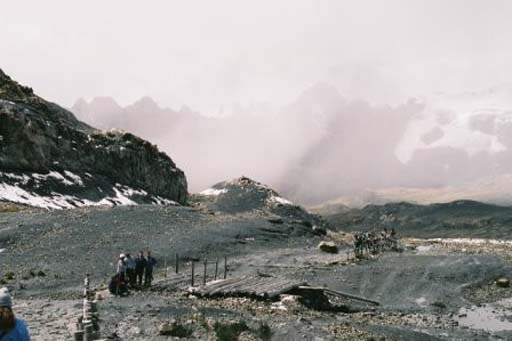Llanganuco
Tuesday, October 25th, 200521 October 2005 (Friday) – Huaraz, Peru
After the orgy of harrassed guides, indifferent bus-drivers, confused tourists and more confused organisers at the meeting point, we headed north along Callejon de Huaylas. If the clouds would just go away, we ought to have a lovely view of snow-white Cordillera Blanca to our right. But the clouds stuck to the mountains like glue and when we could perhaps glimpse a modest square of snow, we would yelp in delight and point.
We were given 15 minutes in Carhuaz where the guide had sung praises of some wholesome naturally-made ice-cream sold in a particular ice-cream parlour. The entire world of Peruvian tourists from the seven or eight tour buses were already there queuing for the ice-cream, of course. I love ice-creams but with a recent diarrhoea… hmmm, better not. But I used the toilet quickly when everyone’s attention was on the flavours. Naturally, we had to wait 30 minutes for the teachers to find the missing and coincidentally deaf students nonchalantly licking their ice-creams all over the plaza.
Laguna de Llanganuco is a lovely emerald-but-emerald lake found in Parque Nacional Huascaran. To get there, again, we climbed up in a zig-zagged fashion along a ribbony road facing incredible-looking rocky mountains. At the lake, to our right, I believe we were supposed to see Huascaran which is the highest mountain peak here in Peru. Today, with the clouds, er… we pretended we saw Huascarán. Hello.
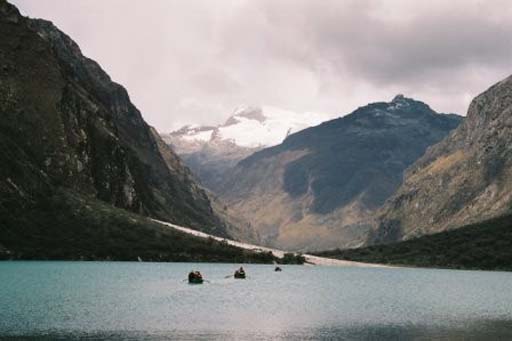
There is a little path that was 20 minutes long. I was eager to check it out. I walked til the end of the path and while there must be at least hundreds of Peruvians here in the park, I was the only one there at the end. OK, later, on my return back, I met 4 other people making their way there… all foreign tourists. The rest of the young Peruvian tourists were posing with this amigo and that, using this camera and that, near the front of the lake. No one seemed particularly interested in exploring more than a few metres.

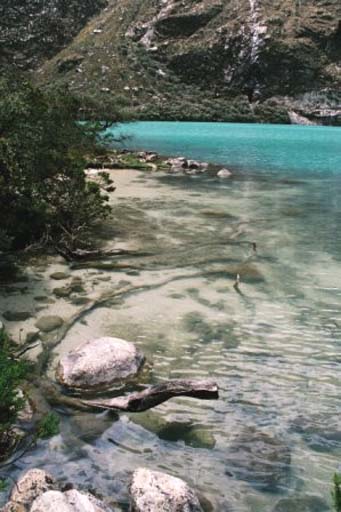
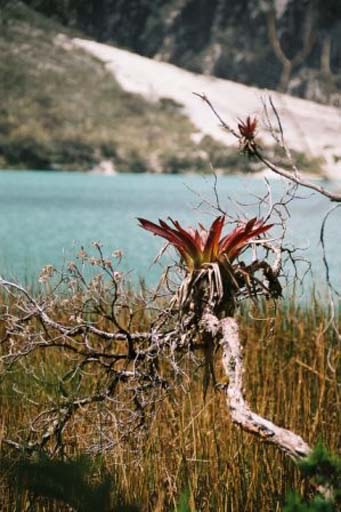
But, alas, with group tours, we had to adhere to the timing and we were given only 1 hour of ‘fun at the park’. This time, surprisingly, the students were already all onboard when I arrived.
We stopped by Campo Santo, which was, personally, the highlight of this trip for its historical significance. In 1970, the worst natural disaster in Peruvian’s history happened here. There was an earthquake, followed by an avalanche from Huascaran and here, there used to be a town called Yungay. But after the earthquake and the avalanche of snow and mud which rolled down from Huascaran 25km away, in 3 minutes, the town ceased to exist. 25,000 people died. Yungay was reconstructed somewhere else but here in Campo Santo, was the exact spot where it all happened.
There was a little conical hill which is now a cemetery. In fact, in 1970, it was then a cemetery as well. As it was a high point, many people had tried to run towards it and 92 made it there. Now, there were reconstruction of an arch with a cross at the top and a huge cross to represent the bodies of the disappeareds who in fact disappeared underneath the massive rubble all over the town. As we listened to the guide explain the various little stories from the survivors of what happened here, we were, or at least, I was, moved to tears at some point.
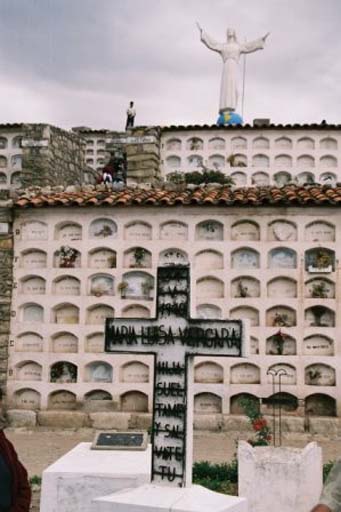
But our dearest teenage students refused to listen, wandered off to chitchat, or stayed near us and chatted, or clambered up to the arch with the cross and yelled for photos. Gosh, this is a sacred site. Anyway, I prefer to give respect to the dead. Good luck to these errant boys!

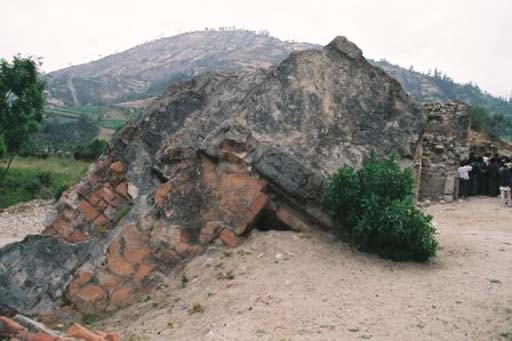
The other group of survivors were children from a school that happened to be located near a mountain that was away from the path of destruction. These 300 small children were put up for adoption all over the country later. Gosh, poor dears.
In the distance, there is a facade of a cathedral which is a reconstruction of the cathedral that used to stand there. When the avalanche came, the cathedral was still holding on. In fact, 4 palm trees from that time were still standing (although 3 of them are now dead) as they were protected by the cathdral and the avalanche passed right around them. Many people, upon seeing the impressive cathedral, ran INTO the cathedral to hide there. One young man tried to enter, but it was full and the doors closed on him. So, he had to run up to the mountain nearby. And in fact, this saved his life because he lived to tell the tale.
What happened later was that after the avalanche, came a series of gigantic rocks, and one massive rock hit the cathedral and utterly destroyed it. The cathedral collapsed like a pack of cards. And days or weeks after, during the excavation, they found the spaces around the cathedral to be empty. Hence, the people inside did not die from the collapse of the building structure… but of asphyxiation because they could not escape. Gosh!!
Meanwhile, that massive rock was still standing where it had rolled to. It is huge! One student asked the guide if it was prohibited to climb the rock. The exasperated guide sighed. Yes, it is prohibited… but you are going to climb it anyway. As the delighted boy ran off to climb onto the rock, others had already reached it and were screaming for photos.
